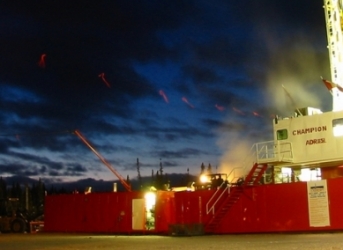I wrote earlier about oil prices, or more specifically, about where oil prices might go in the medium to long term; that was $80/bbl plus or minus $20/bbl if you want the nub of the article. This piece is an analysis of how the upstream oil industry's cost base has been, and might be, affected by changes in oil prices.
At oil prices of less than $50/bbl not many North Sea projects look very profitable, especially when you evaluate the investments with the costs operators have become accustomed to paying over the last three or four years. Rig rates, vessel rates, engineering and construction costs have all been at historic highs. That has been inevitable, all oil and gas contractors from drilling companies to heavy lift contractors were at full stretch and, so, have been adding capacity; and adding capacity costs money.
But in a low oil price environment demand for services will fall and when demand falls, prices will fall too. But how far and how fast? Related: Inefficiencies Abound In U.S. Shale
IHS provide the industry with a very useful index of capital costs over the past fifteen years. Their data is available here. They track the costs of equipment, facilities, materials and people involved in the construction of a diversified portfolio of projects. For the purpose of this analysis I have taken their data and deflated the index using the Bureau of Labor Statistics CPI index and then added on to the chart below the oil price in real terms. That way we can see how costs have really increased (or decreased) and get a clue as to what might have been behind the changes.

IHS UCCI deflated by US BLS CPI & Brent oil prices, also inflated by US BLS CPI to present oil price in 2014 dollars
Well, correlation doesn't prove there is causation, but it isn't hard to see that when oil prices went up, the cost of doing business in the oil patch went up too. When the oil price tripled from c. $40/bbl in 2000 to 2003, to $120/bbl in 2008, the UCCI (Upstream Capital Cost Index) went up 80% in real terms.
This chart also gives us a clue as to what happens when oil prices fall. At the end of 2008 prices fell precipitously, just as they are doing today. It took about eighteen months for the impact of the oil price drop to work its way through the system, but eventually costs fell by about 13% even though the oil price had actually recovered back to about $80/bbl. When, after that dip, the oil price climbed again and then steadied at about $110/bbl the index stabilized, midway between the peak of 2008 and the trough of 2010.
The uplift in the UCCI index over the last decade fits with the actual experience of oil companies everywhere. Costs have been higher, a lot higher than we remembered. It is that high cost base combined with current low oil prices that is making lots of North Sea projects look marginal. Related: OPEC Production Figures – Winners And Losers Aplenty
But we can already foresee what might happen to the cost base if prices stay low. It doesn't seem unreasonable to speculate that if the oil price settles at $80/bbl in the long run then capital costs will once again ease off by 10% to 15% over the next a year or so. If the oil price stays as low as $50/bbl to $60/bbl for a couple of years then I would expect the cost base to fall by around 30%, but perhaps it will take three years for that to happen. Finally, it is pretty clear that it isn't really feasible to expect a bigger reduction than 40%, no matter how low oil prices go.
As always, the pain being felt by the oil producers today will be felt by suppliers and contractors tomorrow. Costs will come down, but it will take some time to show up in bid tabs and budget quotes. Unfortunately for companies entering into major contracts today, or who have just signed contracts, the benefits will be minor. The real beneficiaries will be those companies with uncommitted projects on their books who can wait until costs have actually fallen before spending their money.
By Steve Brown For Oilprice.com
More Top Reads From Oilprice.com:
- After Saudi Arabia Crushes US Shale Who Will It Go After Next?
- Another 5,000 Victims Of The Plunge In Oil Prices
- Oil Prices Most Volatile Since 2009


















